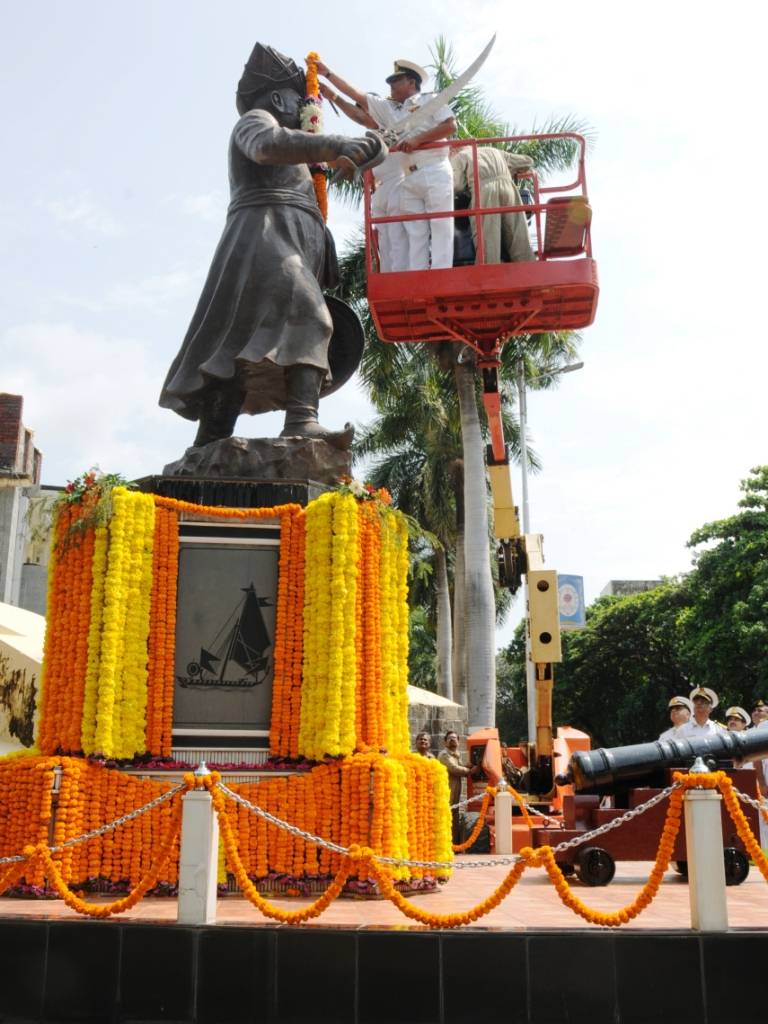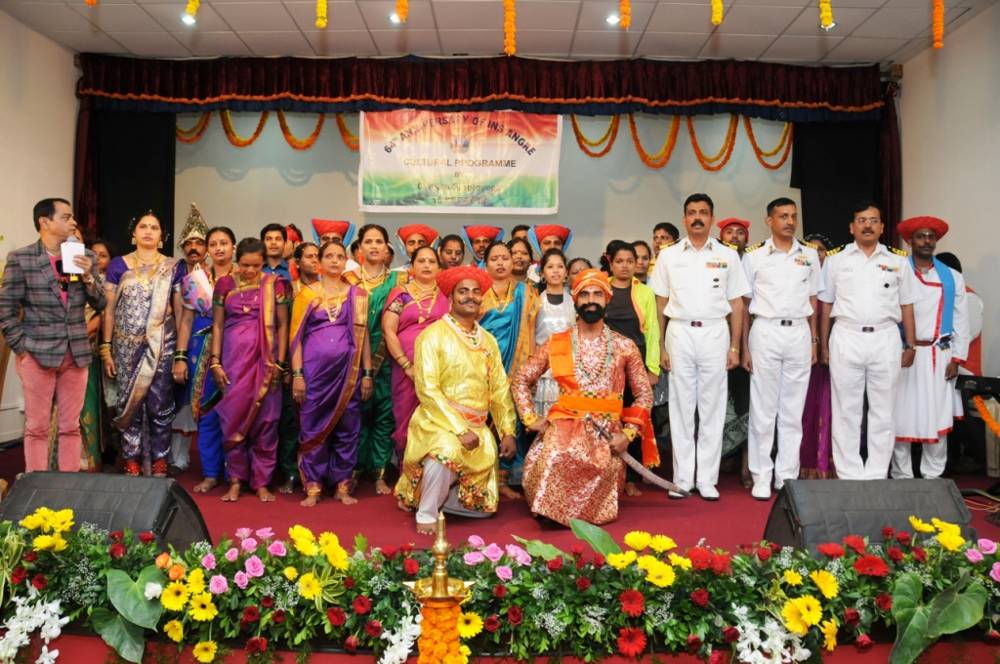INS Angre celebrates its 64th Anniversary
INS Angre celebrates its 64th Anniversary

Garlanding of the statue of Kanhoji Angre by the Rear Admiral SP Lal, VSM, Admiral Superintendent, Naval Dockyard (Mumbai) to mark the 64th Anniversary of INS Angre
Indian Naval Ship Angre, a Naval Establishment of Mumbai, which currently functions as the main ‘base and depot’ establishment for the Western Naval Command, celebrated its 64th anniversary. Officers and civilians, who work together at the establishment, celebrated the day in traditional naval style, with garlanding of the statue of Kanhoji Angre by the Rear Admiral SP Lal, VSM, Admiral Superintendent of Naval Dockyard (Mumbai). A ‘Bara Khana’ and a variety entertainment programme were also organized as part of the celebrations.

Traditional cake cutting and a variety entertainment programme were organized as part of celebrations.
The history of port city of Mumbai and the Naval establishment INS Angre are closely linked. It was here that the potential of Bombay as a port city was first recognized. Though it was only in 1940 that the Castle Barracks were commissioned as HMIS Dalhousie and declared to be a complete naval station, the history of the Bombay Castle (as INS Angre was once called) is much more ancient.

Traditional a variety entertainment programme were organized as part of celebrations.
In 1543, the sultan of Gujarat ceded the Island of Bombay to the Portuguese, who built a fort on the island. But most of the village of Bombay was leased to the famous Portuguese botanist physician, Gracia da Orta whose Manor House is still visible in parts. This house was to later play an important role in the history of Bombay city. It was here that the treaty of cessation was signed on February 18, 1665, between Humphrey Cooke and the Portuguese handing over Bombay to King Charles II of England as part of the dowry to be received by him on his marriage to Catherine of Portugal.
While the house had belonged to the Portuguese, it had braved the attacks of Dutch, English and Arabs forces. When the British East India Company took charge of Bombay castle in 1668, they enlarged and fortified it further, till finally in 1686, it become the headquarters of the East India Company. Probably the fort was used in battles by the British against the Marathas at one point of time. In that case in present name of the base (which it acquired in 1951) is most significant as it is named after the famous Maratha Admiral Kanhoji Angre. The Bombay Castle had thus grown, both in size and importance. A town grew about the castle and ramparts, fortifications and moats sprang up erected around it forming what is today known as the Fort area. It was also during the time of the East India Company that ship building activity in and around the area of the fort received great impetus.
Remnants of the past are still visible within the premises of the INS Angre. Some of the relics of the Portuguese era have survived the test of time. These include massive weather-beaten two-story wooden gates, which now making the entrance to INS Angre, two stoned-carved figures of pantalooned Portuguese soldiers, a rocket shaped lookout tower and about ten feet high sundial, with grotesque carving of heads of men, monster and animals.
The walls of the fort, 23 feet at the base, are the most impressive of all. Made of stone, probably of granite and sand stone from Rajasthan, they have most admirably withstood the ravages of time. Many of the original structures have been preserved as they were at the time of independence, such as 150 years old brass canons, main doors, fort walls and sun dial. However some changes have also been made over time such as the dungeons which were used to house pirates and other defaulters have been converted into offices and stores etc.
During the function, Commodore Suprobho De, Commanding Officer, INS Angre, said that the Navy is committed to preserving the premises to accentuate its heritage value, history and semblance of its past. He added that the historical Indian Naval base will continue to be center of great maritime activity as it has been over the last four centuries






